A nearby, infant star teaches us how planets began to form

A stunning new image of ALMA’s protoplanetary disk sheds light on planetary formation.
“TW Hydrae is quite special. It is the nearest known protoplanetary disc to Earth and it may closely resemble the Solar System when it was only 10 million years old.” –David Wilner
For hundreds of years after realizing that the Earth and the other planets orbit the Sun, humanity has puzzled over the question of how they came to be. Since our Solar System has been around for over four billion years, we can’t truly know the story of our formation by looking at what we have today: it’s only the survivors of a long, violent history that remain. Given that we’ve long known how and where new stars form — in clusters and nebulae, from the collapse of molecular gas clouds — it was a problem that was solely in the realm of theorists for generations, armed only with a knowledge of astronomy and astrophysics.
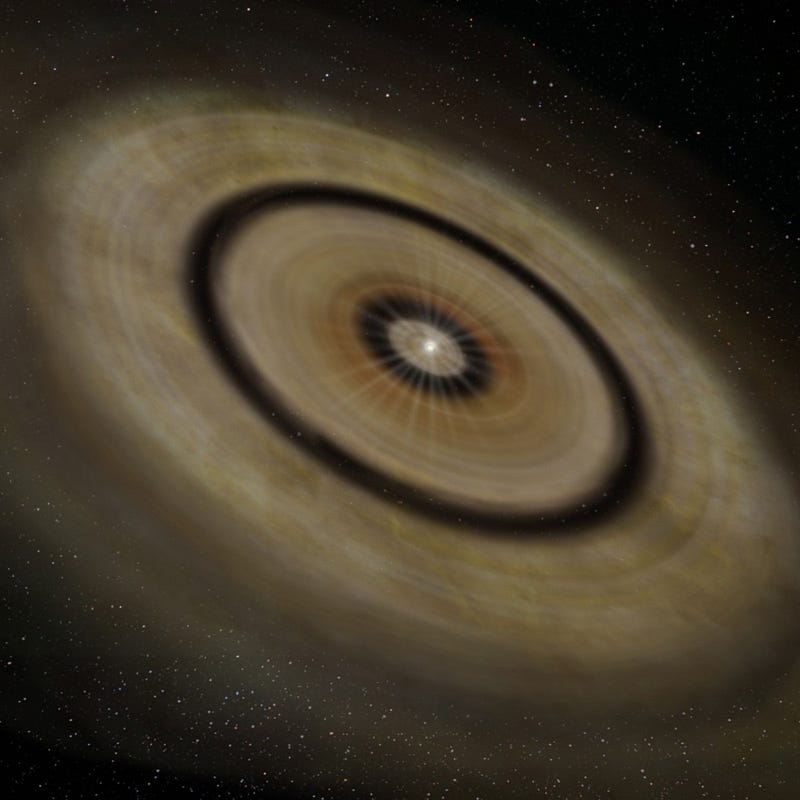
The leading idea was that the collapsing gas clouds would always begin as irregularly shaped objects, with an uneven, non-uniform distribution of matter in them. As gravity worked to bring everything together towards the center, one direction would inevitably fall in faster than the others, creating a pancake-like structure that rotates. Gravity would continue to attract matter towards the center, and it would only be when enough matter reached the core region to ignite nuclear fusion that the rotating disk would start to evaporate. Meanwhile, instabilities and imperfections in the disk would start to grow, attracting matter interior and exterior to its orbit towards it, growing into protoplanets and eventually into full-fledged planets.
As the star aged, these planets would migrate, merge, gravitationally interact, occasionally be kicked out, and finally settle into stable orbits, while the debris disk was eventually evaporated by the stellar radiation. Finally, in the 1990s, the advent of new astronomical techniques combined with 10-meter class telescopes from the ground and the Hubble Space Telescope above the Earth’s atmosphere led to an observing revolution. Not only were the first planets in other Solar Systems discovered, but we began to gain the capabilities to image these protoplanetary disks directly, moving this scientific endeavor from the realm of the purely theoretical into observational territory.

What we found was a spectacular confirmation of our best theories: protoplanetary disks are real, they’re found around the youngest, infant stars in nebulae, they evaporate over time, and they show up with a variety of parameters and orientations. But in order to identify the specific planet-forming phenomena that occur within these disks, it would require a different type of imaging from the conventional optical-to-infrared pictures that Hubble takes in space. Instead, we’ve developed the ability to do radio imaging by building arrays of large (6–7 meter) radio telescopes, separated by anywhere from hundreds of meters to tens of kilometers. The most powerful array of these is the Atacama Large Millimeter/submillimeter Array (ALMA) in Chile, atop a 5,000-meter elevation plateau. By using astronomical interferometry and pointing at young, infant stars known to have protoplanetary disks, we’ve been able to image the structures of them to unprecedented resolution.
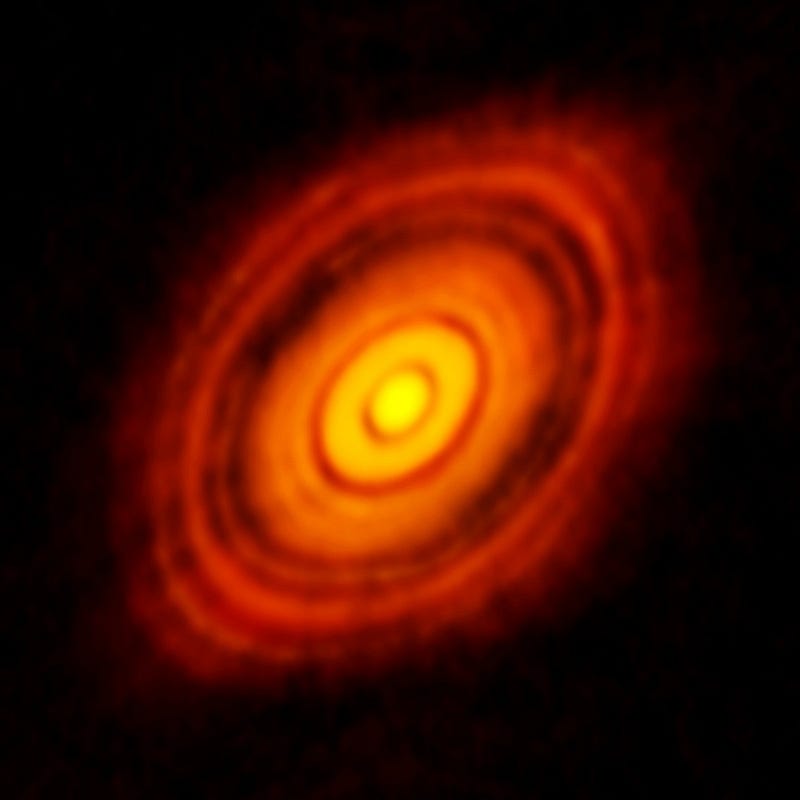
Above is the first ultra-high-resolution image of such a protoplanetary disk from ALMA: the disk around HL Tauri, a star estimated at under one million years in age, located approximately 450 light years away. Most hotbeds of star formation are located 1,000 or more light years distant, such as in the Orion Nebula, so we should consider ourselves to be pretty lucky to have a newborn star this nearby. But the Universe is a big place, even in our own galaxy, and there are tens of thousands of stars closer to us. One of them — TW Hydrae — is a young orange dwarf that’s only a few (5–10) million years old, but since it takes tens of millions of years for protoplanetary disks to be completely destroyed, it was worth investigating to see what was there. Optical telescopes, such as Hubble and the Subaru Telescope, took the first crack at it.
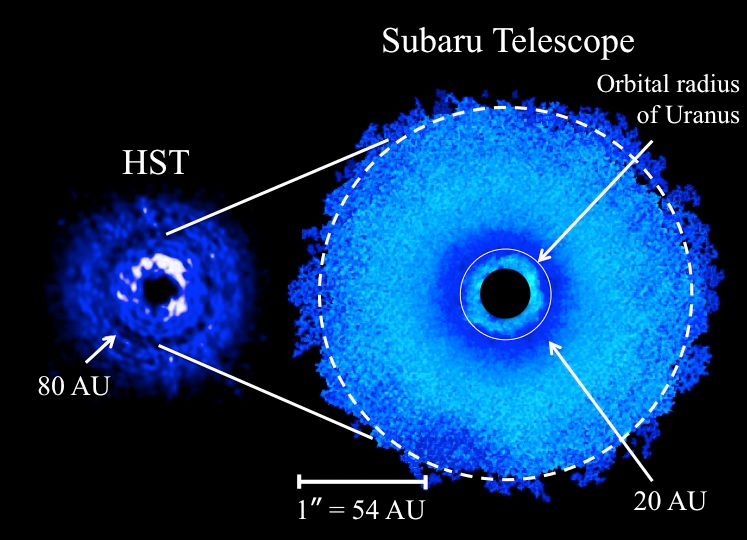
There’s not only evidence of a disk here, but of at least two very clear gaps in the disk at extremely great distances: one at ~20 AU (about the distance from the Sun to Uranus) and another at ~80 AU (double the Sun-Pluto distance). Moreover, this disk is serendipitously oriented at a nearly perfect face-on view from our perspective. Finally, TW Hydrae is only 176 light years away, or less than half the distance of HL Tauri. When ALMA used its “eyes” to view it, we were all blown away.
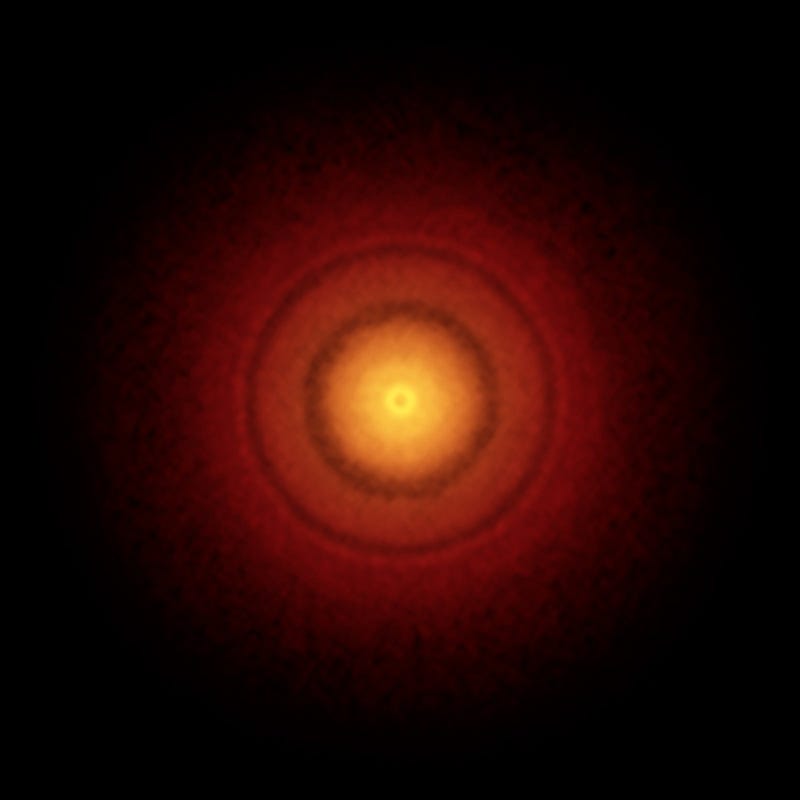
Not only are the two previously discovered planets clearly defined, but you can also see and measure the temperature profile of the dusty disk around the star, and find hints of additional planets both further out and interior to the discovered ones. The two previously known ones I’ve highlighted in red, but there are less obvious ones whose suggestions show up in green. The confidence levels on some of these are low, but going from two to possiblymore than two planets around the nearest known star-with-a-protoplanetary-disk is still extremely exciting!
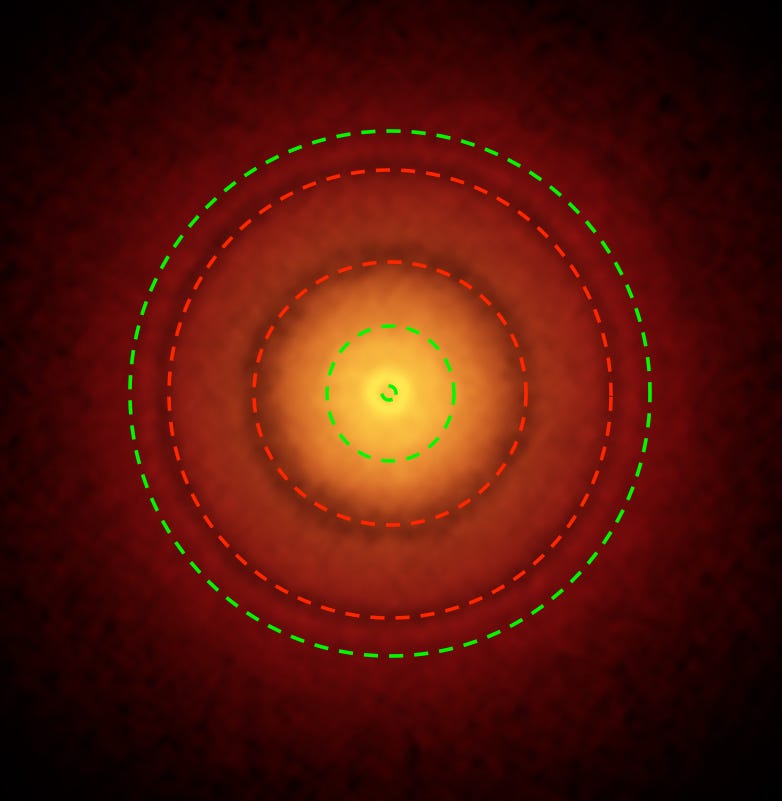
What’s perhaps most intriguing is the very, very inner region of this image, where I’ve added a tiny green circle. You can’t see it all that well on the above image, but here’s what the lead author on the study, Sean Andrews, had to say:
“The new ALMA images show the disk in unprecedented detail, revealing a series of concentric dusty bright rings and dark gaps, including intriguing features that suggest a planet with an Earth-like orbit is forming there.”
A blown-up image of the inner region around this star — the innermost 1 A.U., the same distance Earth is from the Sun — shows that the dust has all been cleared away.
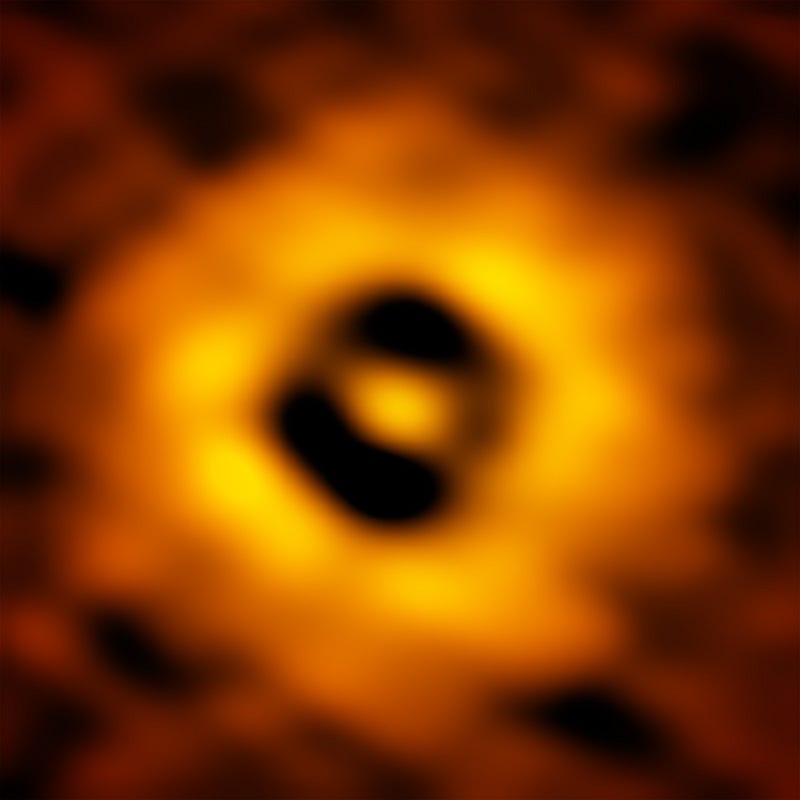
This indicates the likely presence of at least one planet (and possibly more) in the inner solar system of this star, possibly analogous to how our Solar System formed in its early days. The full study is available here, and represents the most detailed set of imaging data in any wavelength ever taken of a star with a protoplanetary disk. At only 175 light years away, TW Hydrae is the closest known object with such features, and we happen to be oriented perfectly to see it face-on. As our technology improves, we may yet find even more planets around it, and perhaps even someday measure their size and mass. One thing’s for certain: thanks to this study, we’re closer than ever to understanding exactly how our own Solar System came to be!
This post first appeared at Forbes. Leave your comments on our forum, check out our first book: Beyond The Galaxy, and support our Patreon campaign!





